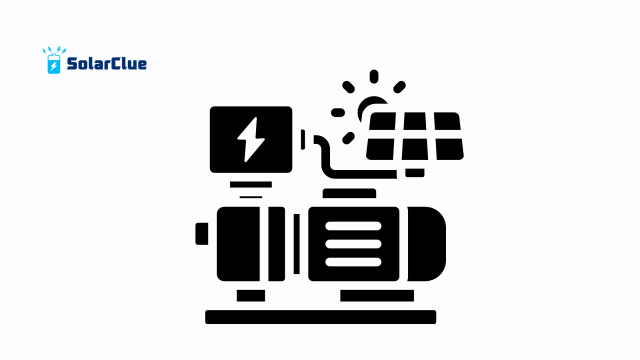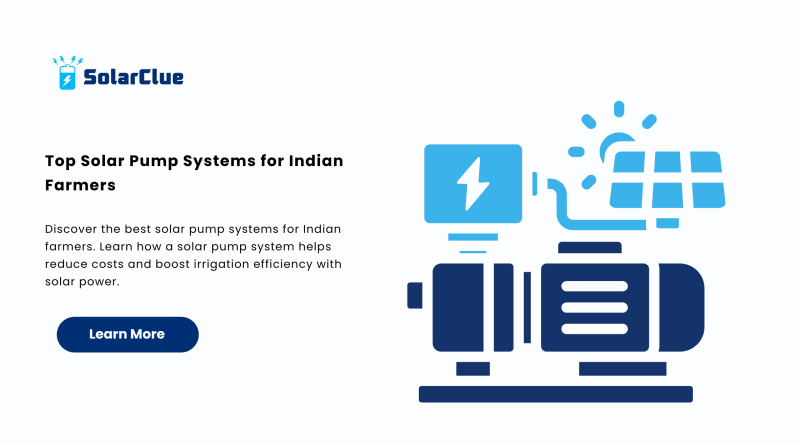Top Solar Pump Systems for Indian Farmers
The backbone of Indian agriculture has always been its farmers. But in recent years, the increasing cost of diesel and unreliable electricity supply have made traditional water pumping methods both expensive and inefficient. Enter the solar pump system—a revolutionary solution that’s not only cost-effective but also environmentally friendly. If you’re a farmer in India or support agricultural development, understanding the benefits and options of solar pump systems is a game-changer.
In this blog, we will explore the best solar pump systems for Indian farmers, their working, types, benefits, government subsidies, and tips to choose the right one.
Table of Contents
- 1 What is a Solar Pump System?
- 2 Why Solar Pumps Are a Game-Changer for Indian Agriculture
- 3 Types of Solar Pump Systems
- 4 Best Solar Pump Systems in India (2025 Edition)
- 5 Government Schemes Supporting Solar Pumps
- 6 Factors to Consider Before Buying a Solar Pump
- 7 Maintenance Tips for Longevity
- 8 How Solar Pumps Empower Rural India
- 9 FAQs
What is a Solar Pump System?
A solar pump is a water pumping system powered by energy from the sun. It uses a solar power system—typically a solar panel array—to run an electric pump. These systems are ideal for areas where grid electricity is unavailable or too expensive. With India’s abundant sunlight, solar pump systems are a perfect fit for irrigation and drinking water needs in rural areas.
Why Solar Pumps Are a Game-Changer for Indian Agriculture
Indian farmers face multiple challenges when it comes to irrigation. Diesel and electric pumps require recurring fuel or electricity bills, maintenance, and repairs. A solar pump system eliminates most of these concerns, offering several advantages:
-
Zero fuel cost after installation
-
Low maintenance and long life
-
Environmentally sustainable with zero emissions
-
Effective in remote and off-grid locations
-
Supported by government solar subsidies
Types of Solar Pump Systems
Understanding the types of solar pump systems helps farmers choose what’s right for their specific land and water source.
1. DC Solar Pump
DC pumps run on direct current and are more efficient in converting solar power into mechanical energy. They are best suited for small and medium-scale irrigation.
2. AC Solar Pump
AC pumps use alternating current, typically with an inverter. These are good for high-capacity operations and deeper water sources.
3. Surface Solar Pump
This pump draws water from shallow sources like rivers, ponds, or tanks. Ideal for farms located near surface water sources.
4. Submersible Solar Pump
Placed inside the water source, these pumps are suitable for deep borewells. They are one of the best solar pump options for farmers with limited surface water access.

Best Solar Pump Systems in India (2025 Edition)
Here’s a curated list of top-performing solar pump systems that are popular among Indian farmers:
1. Tata Power Solar Pump
-
Available in 1 HP to 10 HP range
-
Efficient performance and good customer service
-
Ideal for borewell and surface irrigation
2. Shakti Solar Pump
-
One of the most trusted names
-
Available in AC/DC options
-
Highly durable and suitable for large farms
3. Waaree Energies Solar Pump
-
Known for robust solar power system components
-
Excellent solar panel quality
-
Good value for money
4. Kirloskar Solar Pump
-
Heavy-duty pumps built for rough use
-
Efficient water lifting capacity
-
Ideal for deep irrigation needs
5. CRI Solar Pump
-
Competitive pricing with high efficiency
-
Suitable for both drinking and agricultural use
-
Wide distributor network in India
Government Schemes Supporting Solar Pumps
The Indian government has introduced multiple schemes to make solar pump systems affordable and accessible.
PM-KUSUM Scheme
Under the PM-KUSUM (Pradhan Mantri Kisan Urja Suraksha Evam Utthaan Mahabhiyan), farmers can get subsidies of up to 60–80% on solar pump installations. This initiative is aimed at increasing income by reducing input costs and allowing surplus solar energy to be sold to the grid.
State-Level Subsidies
Many states like Maharashtra, Gujarat, Rajasthan, and Karnataka offer their own subsidies and incentive programs for farmers installing solar pump systems.
Factors to Consider Before Buying a Solar Pump
Choosing the best solar pump requires an understanding of your water source, land size, and irrigation needs.
-
Water Source Depth – Use submersible for deep borewells and surface pumps for ponds/rivers
-
Land Size – Larger areas may need higher HP (horsepower) pumps
-
Solar Irradiation – Areas with more sunlight will generate more power
-
Budget & Subsidies – Check for eligible government subsidies
-
Pump Efficiency – Choose brands with better water discharge per watt
Maintenance Tips for Longevity
Though solar pump systems are low-maintenance, a few best practices ensure their efficiency and durability:
-
Clean solar panels monthly to maximize sunlight absorption
-
Avoid shadowing on panels for better power output
-
Check pump filters and connections periodically
-
Store warranty documents and service contact details safely
How Solar Pumps Empower Rural India
The adoption of solar pump systems is not just a trend; it’s a movement. These pumps are empowering farmers by giving them control over water without relying on erratic electricity supply. They lower farming costs, improve crop yield, and help conserve the environment. In states like Rajasthan, Madhya Pradesh, and Tamil Nadu, thousands of farmers have shifted to solar pump technology and witnessed better productivity and income.
FAQs
Q1. What is the lifespan of a solar pump system?
A good quality solar pump system can last 15–20 years with minimal maintenance.
Q2. Can I use a solar pump during cloudy days?
Yes, most systems have a battery backup or can work efficiently with low light conditions.
Q3. What is the cost of a solar pump in India?
Depending on the HP and type, it can range from ₹50,000 to ₹5,00,000 before subsidy.
Q4. Are subsidies available for all farmers?
Yes, under PM-KUSUM, small and marginal farmers are eligible. Specific state eligibility criteria may also apply.
Q5. Which is the best solar pump for deep borewells?
Submersible solar pump systems by brands like Shakti, Kirloskar, and Tata are ideal for deep borewells.
Conclusion
Investing in a solar pump system is a wise decision for any Indian farmer looking to reduce expenses and secure consistent irrigation. With rising diesel costs and unreliable electricity, going solar is not just sustainable—it’s smart. Explore your options, tap into subsidies, and embrace the future of farming.
Want to explore the best solar pump systems with expert guidance and top brands? Visit solarclue.com or dive deeper into insights on blog.solarclue.com—your trusted partners in powering Indian agriculture with the sun.

